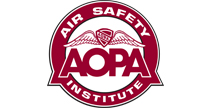Transition trouble
(ERA12LA011)
 By David Jack Kenny
By David Jack Kenny
Other items vary, but one perennial favorite on those lists of “The 10 Biggest Lies in Aviation” is the claim that “If it’s got wings, I can fly it.” If you’re lucky, you’ve known a few pilots with the experience, skill, and exquisitely sensitive seats to jump into an unfamiliar airplane and safely teach themselves its quirks. Most of us don’t quite reach that level, know it, and seek knowledgeable assistance when we decide to start flying something else. Even two models that share a strong family resemblance won’t behave exactly the same. A pilot used to Cessna 172s will find that the 182 requires a lot more back pressure—or nose-up trim—to keep the nose gear from touching down first.
Most of us aren’t ready to be test pilots, and most of us know that. A few may underestimate their talents. Without question, others overestimate their skills.
On the morning of Oct. 6, 2011, a Rand-Robinson KR-2 made a series of high-speed taxis down the 5,252-foot runway of the Mountain Empire Airport outside Wytheville, Va. The pilot had recently bought the airplane and, according to several witnesses, “had never flown it or any airplane of the same type.” The taxi runs were intended to be the first step toward learning its characteristics, and over the course of the morning, they progressed to “crow hops,” lifting briefly off the pavement before touching back down.
Related Links
Transitioning to Other Airplanes online course
“Transitions” Safety Pilot article
Essential Aerodynamics: Stalls, Spins, and Safety online course
Do The Right Thing: Decision Making for Pilots online course
More crow hops followed after lunch. Then, about 10 minutes after 1 p.m., witnesses saw the KR-2 take off from Runway 8. It climbed to pattern altitude, the engine apparently “running satisfactorily,” and then began “a slow left turn” to crosswind. About five seconds after completing the turn, it rolled right and spun into the ground. Fire consumed the airplane and killed the pilot before rescuers could intervene.
The KR-2 has a reputation as a lively little machine. Since it’s an experimental amateur-built design, configurations vary, but by any standards it’s a diminutive two-seater: The original plans called for an overall length of less than 15 feet and a wingspan of barely 20 feet. Different builders have chosen powerplants ranging from Volkswagen, Corvair, and Subaru conversions to Jabiru and Continental engines. Empty weight is less than 500 pounds and maximum gross weight is only 900 pounds, so not much power is needed to reach respectable speeds. The design claimed a top speed of 180 mph and a stall speed of 52 mph; real-world data provided by actual builders cite maximum speeds ranging from 133 mph all the way up to 235 mph, with stall speeds anywhere from 46 to 68 mph. It’s been built in both tailwheel and tricycle versions, some with retractable gear.
The design largely achieves the conflicting goals of high performance, responsiveness, and ease of construction, but that doesn’t necessarily make it easy to fly. One owner summarized 12 years of experience on a homebuilder’s forum:
The KR-2 is a great flying airplane if you don't mind the size. It does demand 100% of your attention at all times. It is not a stable airplane in pitch or roll. It is very pitch sensitive and porpoising is a real problem for the new pilot.
This new owner had reason to understand that his skills might not have been up to the challenge. His last medical application listed 105 hours total time. While it was filed almost two years before the accident, an instructor who had recently given him refresher training believed that was the first time he’d flown since their previous dual lesson a year and a half before. The accident pilot had mentioned his interest in the KR-2 at the earlier lesson, and the instructor recalled telling him “that he wasn’t experienced enough for that type of high performance aircraft and … didn’t have the stick and rudder coordination that was required for such a demanding aircraft and felt that his skill level as a pilot was minimal.”
After he bought the KR-2, the instructor again tried to tell him “that he wasn’t ready for the aircraft and he wasn’t that kind of pilot yet. He also recommended … that he should take at least 4-6 hours instruction before attempting to fly that aircraft.”
The pilot, however, “insisted that he was going to fly that aircraft.”
The mechanic who did its last condition inspection gave the owner similar advice. He recalled telling him “not to buy the airplane, that it was too much for him,” suggested that he get some aerobatic training before trying to fly it, and concluded “that he didn’t feel [the pilot] had the skill to fly that aircraft and shouldn’t have purchased it.” Another pilot based at Mountain Empire gave him similar advice, all to no avail.
It would seem they were all correct. As it happened, though, this particular KR-2 had a quirk that might have challenged a more experienced airman. It was powered by a converted Volkswagen engine that turned counterclockwise—so instead of the left-turning tendencies of most piston singles, it wanted to turn right. The witnesses’ description of an abrupt right-hand spin suggest that he didn’t realize that in all the situations where he’d been trained to use right rudder, left rudder would be needed instead. It appears that he jammed in right rudder just at the moment it could hurt him most.
Confidence is admirable; overconfidence can be lethal. Any suggestion that you’re not yet ready to fly that contraption deserves honest—and accurate—consideration.